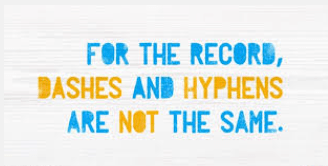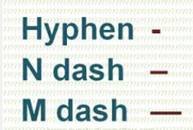Good morning, folks!
So far this week, we’ve discussed hyphens and en dashes; and today we’ll talk about the oh-so-exciting em dash. Put on your seat belt!
Em dashes (—) have several uses, none of which are common in technical writing. Although we don’t often use them, here are the rules for when to use an em dash (just like the en dash that we discussed yesterday, be forewarned that there are no spaces before or after the dash).
· Use an em dash like you would a colon: to set off an amplifying or explanatory element.
Example: They created the best electronic documentation around—Episys eDocs.
· Use an em dash like you would use parentheses; however, em dashes enclose information that should be the focal point of the sentence, not an aside.
Example: We provide custom solutions—Enhanced Loan Application™ (ELA) and Refi Analyzer™—for our clients.
Like en dashes, you can find em dashes (when you are using Microsoft® products) by clicking the Insert tab from the main menu bar, then click Symbol,and then scroll to find the symbol you want.
Alternately, with Num Lock enabled, you can use the shortcut combination CTRL + Alt + Minus to create and em dash. (You can usually find the minus sign and Num Lock on the keypad.) And, as I mentioned yesterday, there are other ways, but these two ways are sufficient since we document in word processing software.
Enjoy your day!
Donna Bradley Burcher | Senior Technical Editor | Symitar®
8985 Balboa Ave. | San Diego, CA 92123 | Ph. 619.278.0432 | Ext: 765432


[…] can be set off with commas, parentheses, or em dashes (—). How do you decide which punctuation to […]
By: Editor’s Corner: Commas, Parentheses, or Em Dashes? | Editor's Corner on June 25, 2018
at 8:27 am